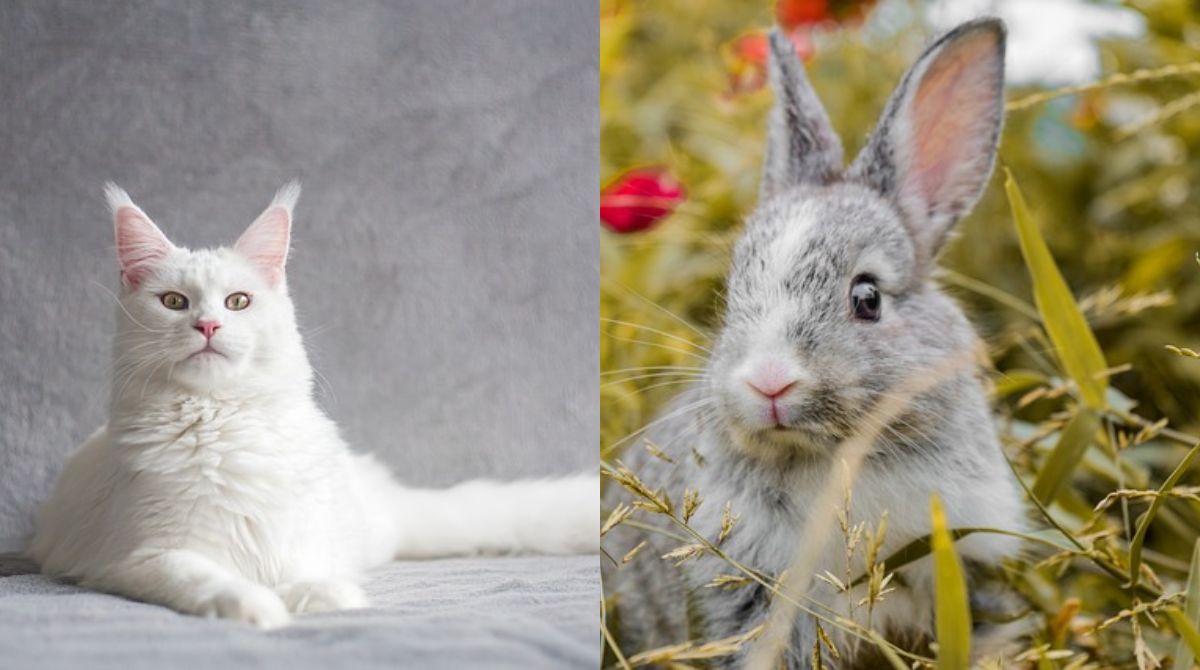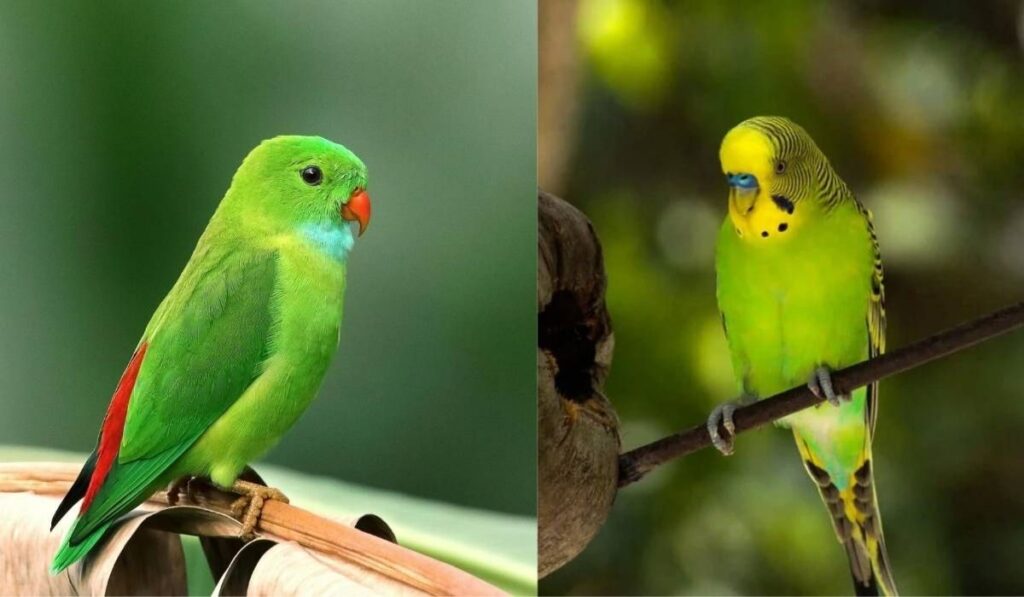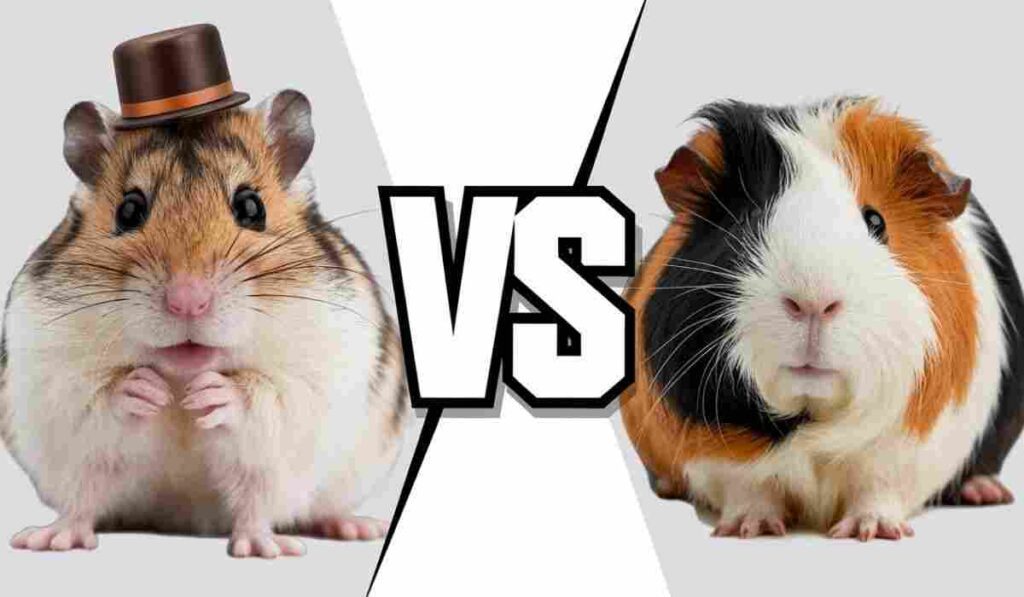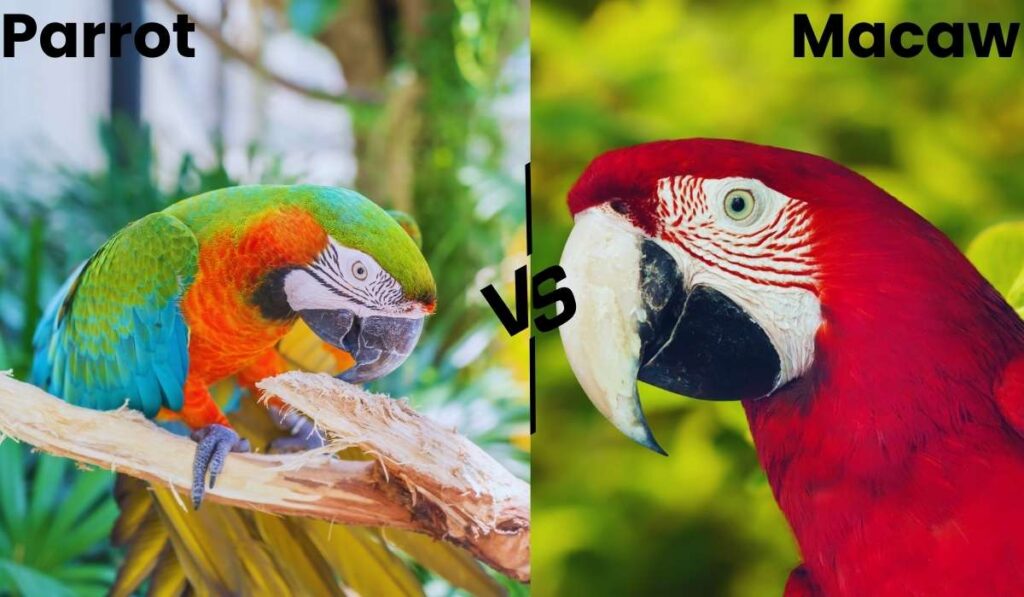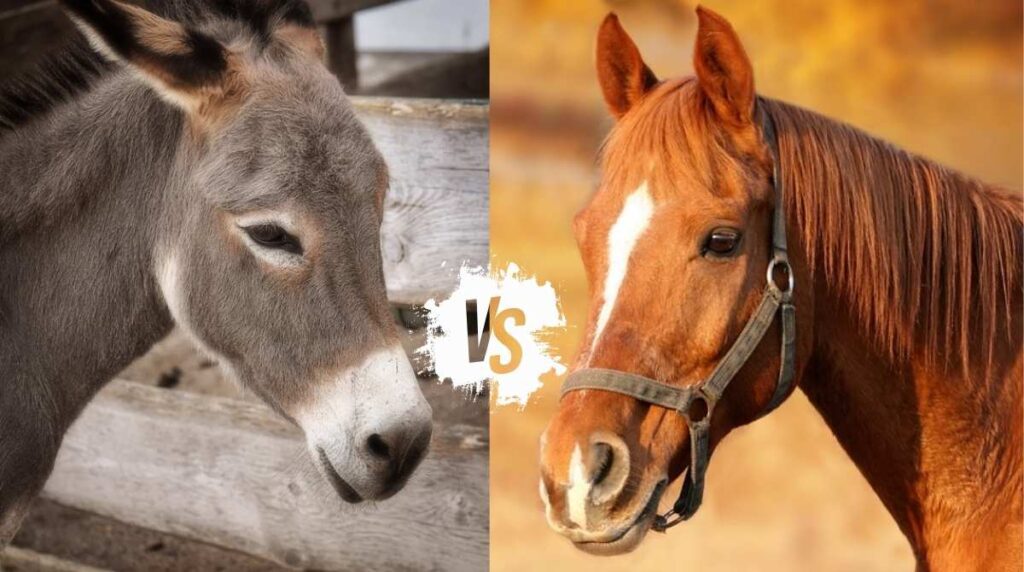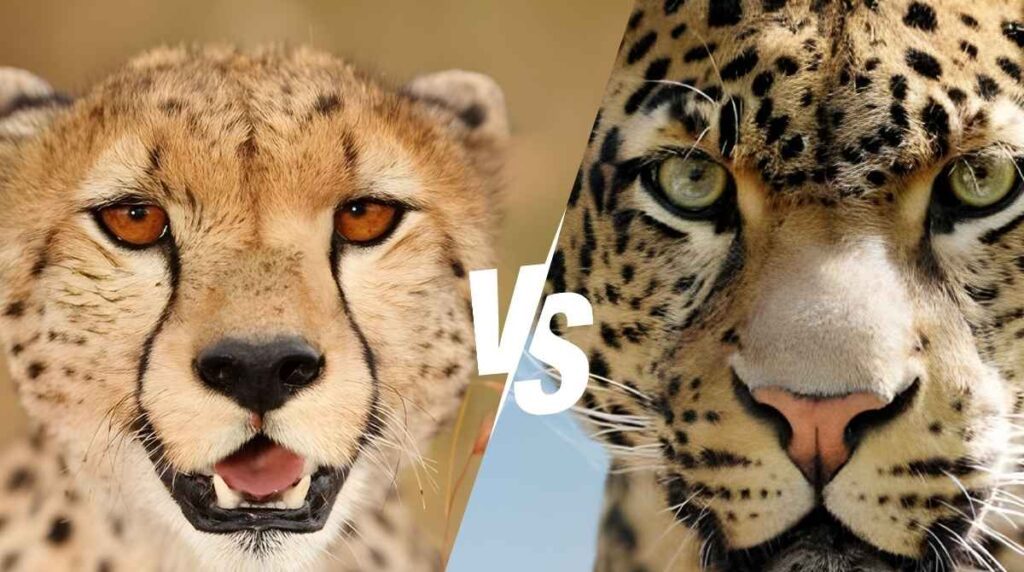Cats and rabbits may be adorable, but they have different histories, behaviors, and care needs! Did you know cats were domesticated 10,000 years ago, while rabbits became pets much later? From diet to speed, social habits to intelligence, discover how these two beloved pets compare—and which one might be the perfect fit for your home!
When Were Rabbits and Cats First Domesticated?
Rabbits and domestic cats have very different stories about becoming our pets. Wild rabbits were first domesticated around the 5th century AD in southern France. Monks helped by breeding them for meat during Lent. Over time, rabbits were bred for different coat colors and sizes.
On the other hand, domestic cats started living with humans about 10,000 years ago. Unlike rabbits, cats weren’t the subject of intentional breeding. They came close to humans because farms had grain that attracted mice. Cats helped control pests, and humans gave them food.
Physical Differences
Cats and rabbits are common household pets, but their physical characteristics vary significantly due to their evolutionary backgrounds. From size and weight to their senses and survival traits, understanding these differences helps pet owners provide better care.
Size & Weight
Cats and rabbits are different species but can vary in size and weight. The significant difference is that cats are usually heavier and have long tails, while rabbits have strong hind legs and no tail like a cat.
Domestic Cats
- The average big cat at home weighs 8 to 12 pounds (3.6 to 5.4 kg).
- Smaller breeds, like the Abyssinian, can be as light as 6 pounds (2.7 kg).
- Larger breeds, such as the Maine Coon, can grow over 20 pounds (9 kg).
Domestic Rabbits
- A normal individual animal, like a rabbit, weighs around 6 pounds (2.7 kg).
- Small area breeds, like dwarf rabbits, weigh between 2 to 4 pounds (0.9 to 1.8 kg).
- Giant breeds, such as the Flemish Giant, can reach 20 pounds (9 kg) or more.
Both cats and rabbits are different animals, and their size depends on their breed and diet.
Fur & Coat Types
House pets like rabbits and cats have unique fur types that require different maintenance to keep them clean. Let’s explore how these rabbit-proof and high-quality coats compare.
Types of Rabbit Fur
- Standard Fur: This fur is a balanced mix of guard hairs and a soft undercoat. There are different types:
- Flyback: The fur quickly returns to its position after you stroke it.
- Rollback: The fur slowly rolls back.
- Standing: The fur stays upright after being touched.
- Rex Fur: Known for its plush and velvety texture, this fur is very soft and dense, making it feel like a cushion.
- Satin Fur: Satin rabbits have a shiny, silky coat with a glossy sheen, making their fur color stand out.
- Wool: Breeds like the Angora have long and soft wool, which is often used for textile production. This fur requires frequent grooming to prevent tangles.
Types of Cat Fur
- Short Coat: These cats, like the Siamese, have sleek fur that is easy to maintain and needs little grooming.
- Long Coat: Long-haired cats, like Persians, need regular grooming to prevent their fur from getting tangled.
- Curly Coat: Cats like the Cornish Rex and LaPerm have curly fur, which sheds less and may help with allergies.
- Hairless: Cats like the Sphynx are almost bald and need skin care to control oil buildup and stay hydrated.
To keep your house pets healthy, give them the right rabbit food and pellets and offer them fresh veggies regularly.
Claws & Teeth
Rabbits and cats have major differences in their claws and teeth, each designed for its unique role as a prey animal or hunter.
The Claws
- Rabbits: They have long, sharp, non-retractable claws for digging burrows and gaining traction. These claws can cause injury if a rabbit feels threatened. Regular trimming is needed to avoid overgrowth.
- Cats: Cats have retractable claws for hunting, climbing, and defense. These claws help them catch and hold prey.
The Teeth
- Rabbits: As herbivores, rabbits have 28 teeth that grow continuously. Their large incisors help them gnaw on fibrous foods like hay. Regular chewing is needed to prevent overgrowth.
- Cats: Cats are carnivores with 30 teeth specialized for tearing meat. Their sharp canines are used for hunting and defense, allowing them to catch and tear prey efficiently.
Senses & Perception
Understanding how rabbits and cats perceive the world helps in their successful introduction as companion animals. These species have different survival approaches, whether finding a hiding place or relying on their basic instincts.
The Vision
- Rabbits: Nearly 360-degree vision to spot predators, with blind spots in front and behind. They detect motion well, see limited colors (blue and green), and have decent night vision.
- Cats: See 6 times better in low light, have a 200-degree field of view, and detect motion well but struggle with reds, greens, and close-up focus.
The Hearing
- Rabbits: Large, rotating ears detect sounds up to 42,000 Hz, helping pinpoint distant predators.
- Cats: They can hear up to 85,000 Hz, and their rotating ears pinpoint sounds and detect high-pitched frequencies used by rodents.
The Smell
- Rabbits: About 100 million scent receptors, using twitching noses to detect food, recognize others, and mark territory.
- Cats: Sense of smell is 14 times more potent than humans. Use Jacobson’s organ to analyze scents, aiding in territory marking and recognition.
The Touch
- Rabbits: Sensitive whiskers for navigation, paws to feel textures, and delicate fur, especially on the nose and ears.
- Cats: Whiskers detect objects and air currents, paws sense vibrations, and fur helps respond to touch.
The Taste
- Rabbits: With 17,000 taste buds, they prefer sweet, leafy greens and fibrous foods while avoiding bitter or toxic plants.
- Cats: Can’t taste sweetness, have about 470 taste buds, prefer meaty flavors, and rely more on smell than taste when choosing food.
Rabbits and cats rely on their unique senses to navigate their world, whether avoiding threats or seeking comfort in their hiding places.
Speed & Agility
Rabbits and cats are both fast and agile, but their speed and agility serve different purposes based on their survival needs.
The Speed
As prey animals, Rabbits depend on their incredible speed to evade predators. They can reach 35 to 45 mph (56 to 72 km/h) in short bursts, using their strong hind legs for rapid acceleration and quick directional changes. In contrast, cats, skilled hunters, reach up to 30 mph (48 km/h), relying on stealth, agility, and patience when stalking prey.
The Agility
Rabbits rely on their powerful hind legs to leap great distances and change direction swiftly. Their rapid zigzag movements make them difficult for predators to catch. In contrast, cats are expert climbers and jumpers, capable of leaping six times their body length. Their flexible spine and retractable claws help them land safely and execute precise hunting maneuvers.
Behavior & Temperament Rabbit vs Cat
Rabbits and cats have unique behaviors shaped by their basic instincts. Understanding their different approaches to socialization, independence, and reactions helps create a successful introduction as companion animals.
Social Behavior
- Rabbits: Social animals that thrive with companionship, especially with their kind. They need interaction to prevent loneliness.
- Cats: More independent, forming selective bonds. They can be content alone but still enjoy social interaction on their terms.
Independence vs. Affection
- Rabbits: Affectionate when socialized but require daily interaction and a free-roam setup to feel secure.
- Cats: Naturally independent; some enjoy cuddling, while others prefer minimal handling. They engage with humans on their terms.
Instincts & Reactions
- Rabbits: As prey animals, they rely on hiding places to feel safe and can be easily startled.
- Cats: As predators, they prefer high perches to observe their surroundings and react quickly to movement.
Interaction with Humans
- Rabbits: Require daily socialization and a calm environment to bond with owners.
- Cats: More self-sufficient but still form strong attachments. Adapt well to various lifestyles.
Rabbit vs Cat Care
Choosing between a rabbit or a cat? Both make great companions but have very different care needs! Here’s a quick comparison to help you decide:
| Care Aspect | Rabbits | Cats |
|---|---|---|
| Diet | High-fiber diet: hay, leafy greens, and occasional fruit treats. Pellets in moderation. | Meat-based diet: protein-rich wet or dry food. Minimal veggies. |
| Habitat & Housing | Need a spacious, safe enclosure with soft bedding and hiding spots. Indoor or outdoor setup. | Thrive indoors but can explore outside. Need litter boxes, scratching posts, and cozy spaces. |
| Grooming & Hygiene | Regular brushing, nail trims, and dental care (teeth grow continuously!). | Self-groomers but may need brushing, nail trims, and vet dental care. |
| Exercise & Playtime | Daily hopping, tunnels, chew toys, and mental stimulation are essential. | Love climbing, hunting, and interactive play to stay active. |
| Social Needs | Bond deeply with humans or other rabbits. Sensitive and need gentle interaction. | Independent but can be affectionate. Some prefer solitude, others love cuddles! |
Pros & Cons: Which Pet Fits Your Lifestyle?
| Pet | Pros | Cons |
|---|---|---|
| Rabbits | Quiet and non-aggressive.
Can be litter trained. Affectionate but not overly needy. Cheaper food and maintenance costs. |
Fragile and require careful handling.
Prone to dental and digestive issues. Need constant chewing materials to prevent overgrown teeth. Shorter lifespan than cats. |
| Cats | Independent and require less supervision.
Longer lifespan (12-20 years). Can be both indoor and outdoor pets. Less risk of sudden health issues compared to rabbits. |
Can be territorial and aggressive toward other animals.
Higher veterinary costs. Require scratching posts to avoid furniture damage. Not always compatible with small pets. |
Can Rabbits and Cats Live Together?
Yes, rabbits and cats can live together if they have compatible personalities and are adequately supervised. Cats are natural hunters, while rabbits are prey animals, so you need to be extra careful. Creating a safe space for your rabbit is essential to protect them.
Look for signs of a calm cat and a curious rabbit, but watch for any stress or aggression. Introduce them slowly, keep regular vet appointments, and provide fresh veggies and plenty of hay for your rabbit’s health and happiness.
How to Introduce a Rabbit and a Cat
Introducing a rabbit and a cat can be tricky, but with patience, it can work! Start by keeping them in separate spaces, allowing each pet to adjust to the other’s scent. Use a safe space, like a rabbit-proof room, to ensure your rabbit’s safety.
Gradually, it will enable them to meet while keeping the cat calm and observing both animals closely. Always supervise their interactions; separate them if things get too stressful. A successful introduction takes time, so be patient and provide both pets with high-quality rabbit and cat food.
Keeping Your Pets Separate: When & Why?
Keeping your pets separate in certain situations is essential to keep everyone safe and comfortable. If your pets have different instincts, like cats and rabbits, they should be kept apart until they get used to each other’s presence. Also, if one pet is sick or stressed, separating them can help. Pets with different personalities might need some space to avoid fights. Keeping pets separate ensures they stay healthy, happy, and stress-free, making a peaceful home for all.
Diet & Nutritional Differences
Rabbit Diet:
- Herbivore Needs: Rabbits require a high-fiber diet with unlimited hay, fresh veggies, and rabbit pellets. These foods provide essential vitamins and help with digestion.
- Dangers of Incorrect Feeding: Avoid feeding rabbits foods like iceberg lettuce, chocolate, and certain fruits, as they can be toxic.
- Hydration & Digestive Health: Fresh water is essential. Proper diet and hydration are required to prevent GI stasis, a serious digestive issue.
Cat Diet:
- Obligate Carnivores: Cats need protein-based meals like meat or fish to thrive. Their bodies cannot process plant-based foods as efficiently.
- Common Health Issues Related to Diet: Overfeeding, feeding low-quality food, or not providing the proper nutrients can lead to obesity, kidney disease, and diabetes.
- Best Foods for Longevity: High-quality wet food is often preferred for hydration and overall health, but dry food can also be part of a balanced diet.
Training & Intelligence: Which Pet Learns Faster?
When it comes to training and intelligence, rabbits and cats have unique strengths. Here’s a breakdown of how they compare:
| Training Aspect | Rabbits | Cats |
|---|---|---|
| Litter Training | Rabbits can be litter trained easily as they naturally choose a corner. Patience and consistency are needed. | Cats are natural litter box users from the start. They train quickly with a clean box. |
| Tricks & Commands | Rabbits can learn basic tricks like “come” or “sit” with positive reinforcement, but they may not be as motivated. | Cats can learn tricks like “sit” or “high five,” but they are less enthusiastic. Consistency helps. |
| Problem-Solving Abilities | Rabbits are intelligent and can solve food puzzles and simple mazes, showing impressive problem-solving for prey animals. | Cats are curious and have great problem-solving skills, especially when it comes to food. They understand cause and effect quickly. |
Lifespan & Common Health Issues
| Aspect | Rabbits | Cats |
|---|---|---|
| Average Lifespan | 8-12 years | 12-20 years |
| Common Health Risks | Dental problems (e.g., overgrown teeth), GI stasis (gut slowdown), respiratory infections, ear mites, and abscesses. | Kidney disease, obesity, diabetes, hyperthyroidism, dental disease, and urinary tract infections. |
| Veterinary Costs | Routine checkups every 6-12 months. Dental care and GI stasis treatment can be costly. | Regular checkups, vaccinations, and occasional treatments for chronic conditions. Emergency treatments like for kidney disease can be expensive. |
| Frequency of Checkups | Every 6-12 months for wellness checks. Annual dental exams are often needed. | Annually for general health; more frequently for older cats or those with chronic conditions. |
Conclusion
While rabbits vs cats are popular pets, they differ significantly in behavior, care, and biology. Rabbits need a high-fiber diet, regular grooming, and social interaction, while cats are more independent, with a carnivorous diet and low grooming needs. Their personalities and physical traits shape how they interact with humans and each other. Both can be wonderful companions with proper care and understanding, but it’s important to respect their individual needs and preferences for a harmonious relationship.
Article helpful Send your Feedback and For another fascinating comparison, check out Bear vs Lion.
FAQs About rabbits vs cats
What are the key differences between rabbits and cats as pets?
Rabbits require a high-fiber diet, daily grooming, and social interaction, while cats are more independent, have a carnivorous diet, and have low grooming needs. Their distinct personalities affect their care and behavior.
How should I care for my pet rabbit daily?
Pet rabbits need unlimited hay, fresh veggies, rabbit food, and daily grooming. They also require a rabbit-proof living space, clean litter boxes, and regular vet care for overall health.
Can cats and rabbits coexist in the same home?
Yes, with careful introduction and supervision, cats and rabbits can coexist. Ensure both pets have separate spaces and monitor interactions, as cats’ predatory nature requires caution.
Are rabbits considered high-maintenance pets?
Yes, rabbits are high-maintenance due to their dietary needs, frequent grooming, and the need for ample space and social interaction to stay healthy and happy.
Do rabbits need special housing or living space?
Rabbits require a rabbit-proofed space with a litter box, water bowls, and plenty of room to run. Whether indoors or outdoors, ensure their living environment is safe and comfortable for their needs.
